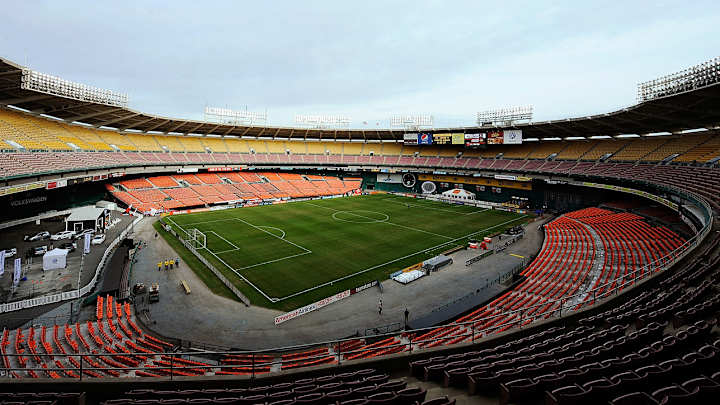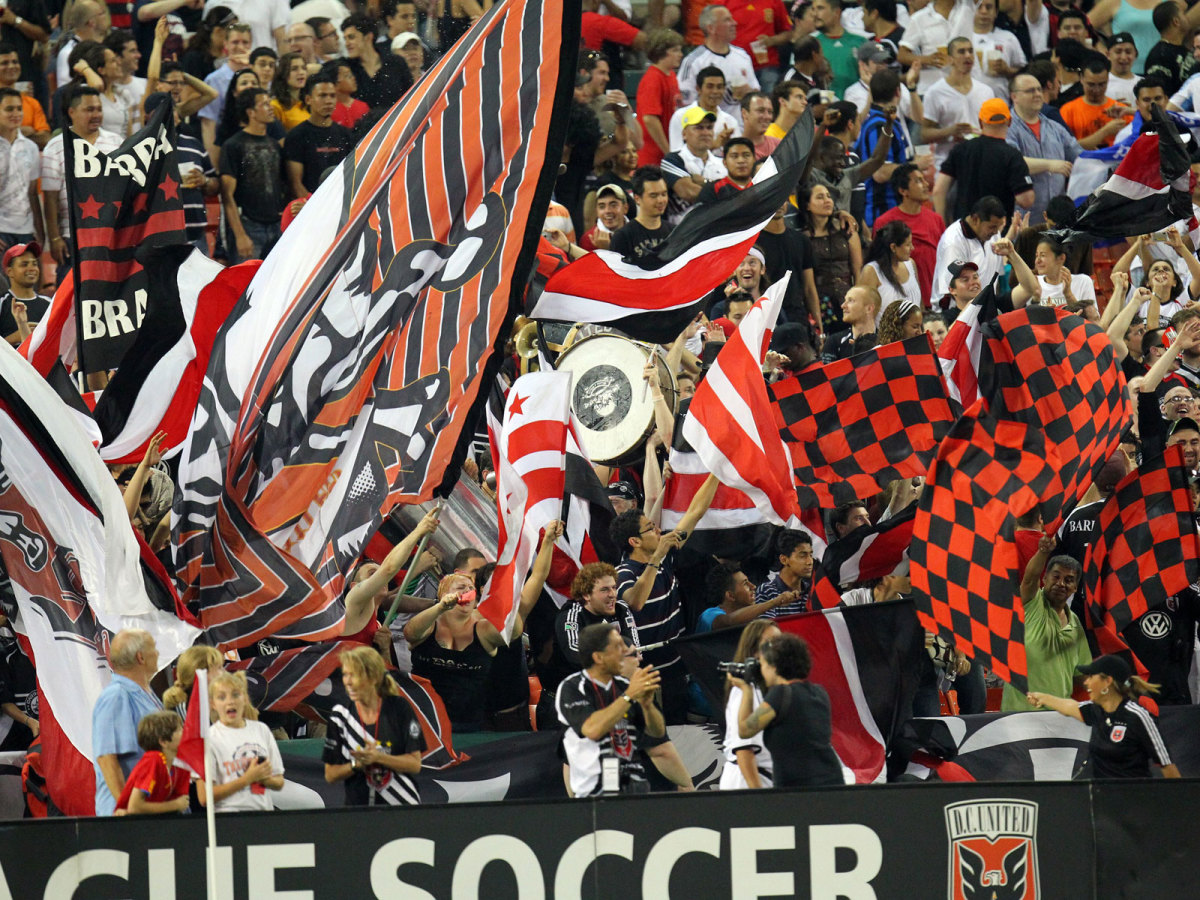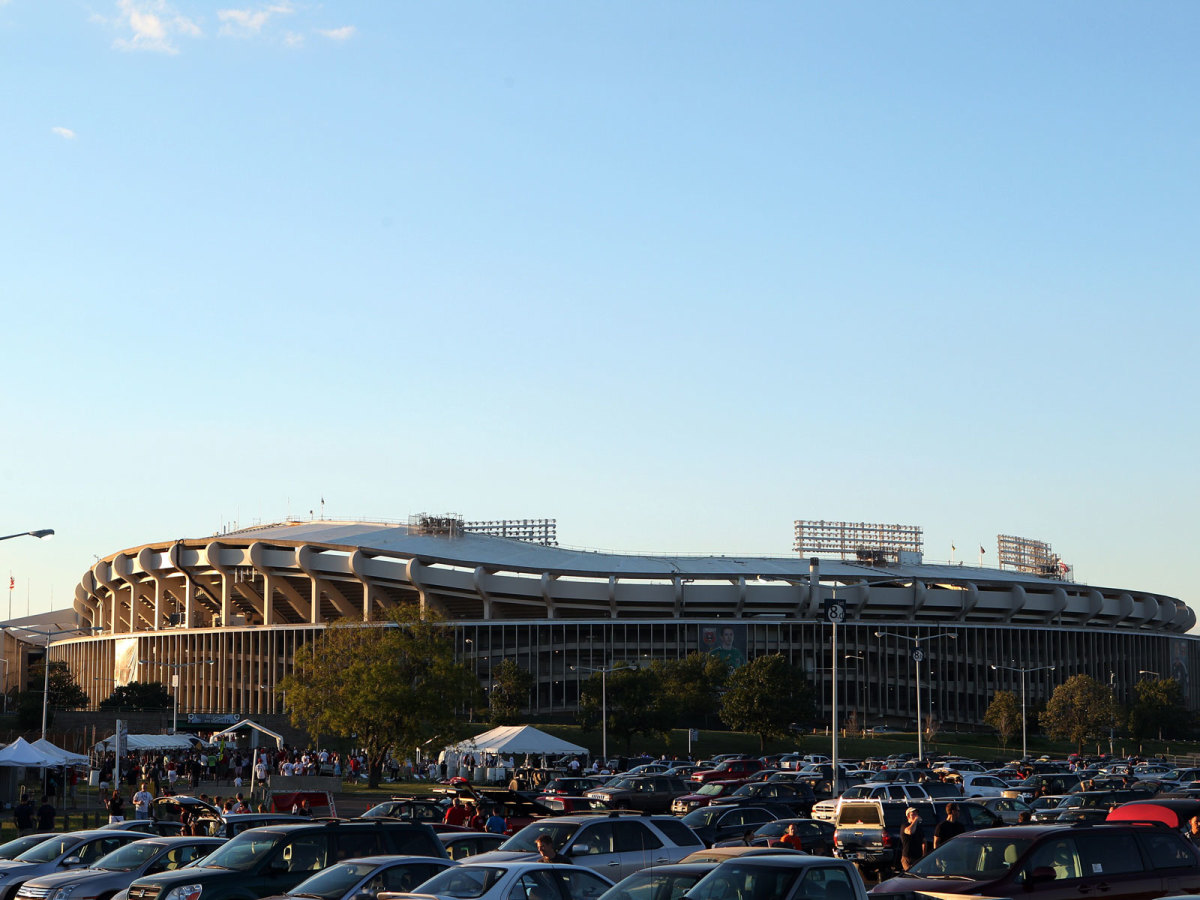RFK Stadium's Last Call a Final Farewell to American Soccer's Common Thread

WASHINGTON, D.C. — After a couple weeks of gut punches, aloof arrogance and so many expressions of faith stomped on and returned to sender, American soccer could use a bit of a pick-me-up. It needs a reminder of what the sport should be about (in part), and why it appeals almost universally. And it’ll get that reminder here Sunday afternoon, as a community says a reverential goodbye to a stadium its been eager to leave for years.
D.C. United will entertain the New York Red Bulls on Sunday in the final match of the 2017 regular season, which doubles as the host’s final appearance at crumbling, crusty RFK Stadium. After a long road trip to start 2018, United finally will have a home of its own as it moves southwest to Audi Field. There’s very little at stake in the finale, at least superficially. New York (13-12-8) is locked into sixth in the East and almost certainly will be resting players ahead of a mid-week knockout-round game. United (9-19-5), the four-time league champion that had qualified for the playoffs three straight years, will finish this season in the conference cellar. The Atlantic Cup rivalry trophy is up for grabs, but that’s of little concern for most.
Instead, it’s the intangibles that will provide meaning and motivation. There will be nostalgia, celebration, collective experience and memory—all the things soccer is about for so many people around the world. No place in the USA has more of those things than RFK, which opened in 1961 as a football and baseball venue but over time became inextricably bound to American soccer.

Every story needs a setting. If U.S. soccer has one, it’s been RFK. There isn’t a significant player or team, men’s or women’s, over the past half-century that doesn’t have an RFK connection. It’s the only American stadium that’s been home to men’s and women’s professional teams and hosted World Cup, CONCACAF Gold Cup, Women’s World Cup and Olympic matches (not to mention CONCACAF Champions Cup, MLS Cup, NASL Soccer Bowl, U.S. Open Cup finals, etc.). Johan Cruyff, Jaime Moreno and Mia Hamm called it home. FC Barcelona, AC Milan, Ajax and Boca Juniors stopped by. The U.S. men’s national team has visited RFK more than any other venue, and for the U.S. women it ranks No. 2.
RFK is American soccer’s common thread. Fans who attended Dips or DCU games now can sit in the same seats with their children. Or they can watch them play—John Harkes captained both the USA and D.C. United in 1996. His son, Ian, is finishing out his rookie season with the club. This country is massive, soccer cultures are diverse and much of the game’s domestic history remains parochial, nascent or unwritten. Except at RFK. It’s all happened here.
The Redskins departed after the 1996 season and baseball returned in 2005 and then left again in ’08. By then, RFK already was long past its prime. United remained, reluctantly, losing money and falling behind its MLS peers as it searched for a new home. But the stadium never lost its character, and to DCU’s credit, it took ownership of those flaws and tried to make them a strength, whether it was the stuffed raccoons sold at the club shop or the understanding that opposing teams wanted to be there even less.
RFK’s trajectory as DCU’s fortress mirrors the trajectory of both the club and MLS.
What to Watch for on MLS Decision Day
Apart from a handful of club staffers and a couple journalists, nobody has spent more time at RFK in a professional capacity then Ben Olsen, the long-time midfielder turned head coach.
“It was authentic, early. The crowd support was very good,” he told SI.com this week while sitting in one the stadium’s abandoned baseball dugouts. “The team was great, so you knew you were in for it. You add all that up and it was just a great venue to play in.”
While other MLS clubs had silly names and played in ridiculous uniforms inside cavernous NFL bowls, United and RFK looked like soccer. The black kits, the country’s first large and organized supporter’s groups, the shaking stands—it was something the American game hadn't seen. It was an arena that literally bounced and breathed. The high walls and iconic, undulating roof trapped the sound. RFK represented, for a time, what the rest of the league wished it could be.
“It never compared to stadiums with all of the luxuries,” long-time U.S. and MLS player Alexi Lalas said to The Washington Post’s Steven Goff, who’s been covering DCU since day one. “But it was something authentic and organic.”

That template was improved upon several times over in other cities as DCU investors came and went, and a new stadium remained elusive. Eventually, Erick Thohir and Jason Levien took over in 2012 and found the right path. Meanwhile, Olsen and United had to figure out how to continue to make RFK work.
“As the years went on the place changed—or I should say other places changed,” Olsen said. “They started building new venues. Soccer evolved in this country over the 20 years and this place became every year, a little bit dingier. The crowd numbers would move up and down.
“I’ve passed teams when they’re coming in here and they can’t believe what a s***hole this place is,” Olsen continued. "They don’t see it every day. We’re at the point where we embrace that. That’s how the narrative has kind of changed. David Villa’s not in the mood to play because there’s cement falling in the locker room? Great! We’ll use our home advantage, whatever it may be.”
Crew's Fabric is Interwoven With Columbus; If Precourt Can't See That, He Should Sell, Not Move
D.C. is 10 games below .500 this season but has a chance to finish its home schedule on even terms if it can beat New York. So it still works, to some small extent. But it’s time to go.
“We’ve been at a point, where frankly we need to get out of here,” Olsen said. “Being a romantic about this building and the club, I love this place. It’s sad and I’ll miss the good nights here—the nights that are loud and we’re playing well and it’s one of those perfect storms at home. There’s nothing like that feeling.”
That, right there, is what soccer should be about. That feeling. The connection between club and community and the setting where it all happens. DCU’s social media hashtag this week has been #LastCallatRFK, and it’s a good choice. RFK was the local bar where everyone knew your name. Sunday's commemorative poster and program cover portrays a Lot 8 tailgate attended by luminaries from throughout RFK’s past, from Cruyff and Hamm to Olsen and Goff and so many other players, fans and people connected to that nexus. Most in attendance Sunday will be able to identify the majority of the faces depicted.
If American soccer has lost sight of what’s important in recent weeks, it can look toward that poster, all those faces and the modest, dingy, decaying stadium for some inspiration.
